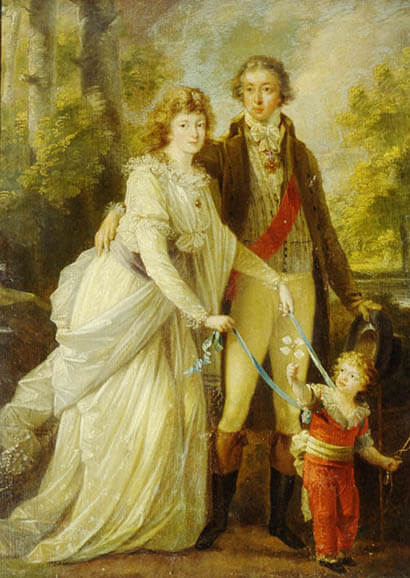The use of child harnesses, or leashes, can be a controversial topic in the early years field. It poses reoccurring concerns surrounding the potential damage restraining a child will have on their physical and psychological development. Blossom Educational sat down with Dr Stephanie Satariano from Child Psychology London, an esteemed educational psychologist and paediatric neuropsychologist, to get her take on child harnesses and how nurseries can safely use them.
About child harnesses: Meet the expert

Dr Stephanie Satariano has worked in the field of child psychology for over ten years, working as an Educational Psychologist and a Paediatric Neuropsychologist across both NHS and private practice. She supports the next generation of Educational Psychologists as a clinical tutor and guest lecturer at The Tavistock and Portman NHS Foundation Trust.
She spends her days helping parents with children’s behaviour, with a particular focus on coaching to aid with sleep disorders. Throw in her passion for providing expert advice on children’s developmental progress, and there’s not much Stephanie doesn’t know about child development.
What is a child harness?
If you are a Bridgeton fan, you may have heard the term leading-strings: referencing the original child harness sported by Louis XV in a well-known portrait with his family. Leading strings were then visible in several royal regency portraits from then on.

Progressing to the modern-day, the introduction of the backpack version was created in 1995 to offer a design more appealing to children in the disguise of an animal backpack. Harnesses are used to restrain a child and are mostly used to ensure the safety of a child in a busy environment. There is a selection of child harness designs available, with torso support (backpacks and chest harnesses) favoured by nurseries to ensure child safety when in buzzing surroundings.
When are harnesses used in EYFS?
Harnesses are more likely to be used by parents for children who have a lower understanding of risk and engage in risk-taking behaviours, Dr Satariano explains. It is less common to see harnesses used by children who consistently remain by the parent’s side. These harnesses sometimes gain a negative reputation for being overly restrictive with vivacious children.
In nursery settings, harnesses can be used for individual children or a small group, often attaching the group at their waist. Dr Satariano explains that the primary use for child harnesses should always be for safety; when weighing the risk reduction possibilities versus the frustrations felt whilst restricted, keeping children safe from road traffic and dangers beyond our control is always the priority. Children can be speedy, speedier than some adults. If a child runs towards a dangerous situation, using a child harness can prevent catastrophic incidents.
What are the concerns around using child harnesses?
Some early years practitioners and parents are divided on whether child harnesses are psychologically damaging for children. Professionals and parents who support the harnesses celebrate the increased certainty of child safety. In contrast, those against harnesses warn of psychological and developmental damage that comes with being restrained and preventing self-choice. We explore the possible concerns nurseries should consider when using child harnesses in their setting:
Limited interaction
Dr Satariano highlights the learning opportunities possible when walking with your child: vocabulary possibilities, communication and language development. This also links with all areas of learning, with specific lessons surrounding personal safety.
When walking along a pavement, there is the chance to discuss that the pavement is safe to walk on because the cars remain on the road. And there is the need to look when crossing the road. If a child is ahead of the parent or nursery worker when walking, the opportunity for discussion can be limited.

Reduction in incidental learning
Children learn by doing; they experience the world around them and begin to form their own conclusions and thoughts. Incidental or experiential learning is vital for child development. Dr Satariano explains, “Children need to fall over in order to learn and alter their movements to avoid future falls. These falls must be supervised and measured, of course! However, placing children on harnesses can remove personal movement choices, potentially reducing the number of incidental learning opportunities experienced.”
Risk-related learning linked to the curiosity approach is an excellent way to develop an understanding of the world around them. The balancing question is: Will children learn more if they are exposed to more environments with the safety of a child harness, or will it be better for their learning and development if they are allowed to explore safer, less risky environments with free reign? There is no black or white answer to this question; the nursery management team must decide on a contextual basis.
Self-fulfilling prophecy
Paediatric Neuropsychologist, Dr Stephanie Satariano, explains the notion of self-fulfilling prophecy and how this can be impacted with the use of child harnesses: “If you tell a child they cannot be trusted not to run away and therefore must wear the harness, the next time they are without the harness, they may be more likely to run.”
These negative internalisations can impact the child’s self-esteem. Still, as with all learnt behaviours, they can be supported by gradually building up external experiences beginning in safer environments and explaining the use of the harness for additional safety.
Self-protection reduction
Innate reactions can be reduced when using specific child harnesses, some argue. When falling, the instinctive response is to place hands out to protect the head and face. If a wrist strap leash is used, this can reduce the self-protective movements that can minimise damage from falling. On the other hand, many parents celebrate the backpack-style harness as preventing many near-miss falls for their children who are still perfecting the art of walking. By supporting the chest and torso, the child can be scooped up before they hit the floor.
Interpretation as a punishment
A focal argument in the pro- or against-using child harnesses or leashes surrounds the child’s interpretation of punishment. Children may dislike the restriction of the harness and react accordingly, therefore putting parents and nursery workers off from using them. Dr Satariano reminds us of the fundamental reason for considering using harnesses, “Not all children like the restrictive nature of a car seat, but they still must use them… if it ultimately promotes their safety.” Circling back to the notion of safety: sometimes the safest option to reduce high-risk incidents is to use a harness.
Is using a child harness lazy parenting?
Dr Stephanie Satariano is passionate about debunking any judgement of lazy parenting, “Using a harness is not an all or nothing approach. Life is busy, and sometimes a toddler’s speed doesn’t fit with the commitments you have- such as dropping other children at school.” Parenting is challenging; some parents might have reduced safety awareness or concentration to fully focus on their child due to busy days or sleepless nights. Dr Satariano celebrates using strategies and resources to support children’s safety and wellbeing during these times.
Moreover, child harnesses are often thought of for small children only, “We can often forget about those children with additional needs; whose cognitive capacity may not match with their movement ability,” Dr Satariano explains. Children with Special Educational Needs or Disabilities (SEND) may have reduced mental capacity and require additional safety measures to experience different environments. Parents and the support staff working with the child must make this call.

How can nurseries use child harnesses safely?
Differentiate activities
If nurseries organise visits and walk where one child is consistently the only individual in the harness, this can reduce their social interaction, physical development, and enjoyment of the experience.
Activities must be differentiated to include a mixture of visits where every child can play without the restriction of a harness and all children being escorted with the harnesses. If a nursery has access to a minibus or transport, this may be used to extend the learning experience without the need to walk along busy roads with increased traffic dangers.
Teach road safety
If your setting is located near several busy roads and child harnesses are a frequent resource used to facilitate external learning, the teaching of road safety should feature within your intent and implementation of your curriculum. Share road safety lessons and activities you enjoy with children and their families via your communication software to engage families with important safety messages.
Risk assess activities
Your nursery will have well-structured risk assessment policy and procedures that are regularly updated and shared with families. Periodically revisit the use of child harnesses and discuss with your team: when harnesses are necessary, and how to develop mitigating risk and personal safety skills with their key worker children.
Involve parents in policy creation
Parents want the best for their children, including safety and experience. Share your current risk assessment policies surrounding child harnesses and create a discussion amongst your parents. Helping to include them in the decision-making process is essential in making your families feel listened to and valued.
The use of child harnesses is a decision to be made by owners or managers of a nursery with the support of parental permission. It can increase your staff’s confidence to visit new environments and ensure a child’s safety is the top priority. However, care should be taken not to overuse the harnesses, encouraging children to take measured risks and learn from their findings.
Subscribe to receive expert advice and tips from seasoned professionals in the early years sector.